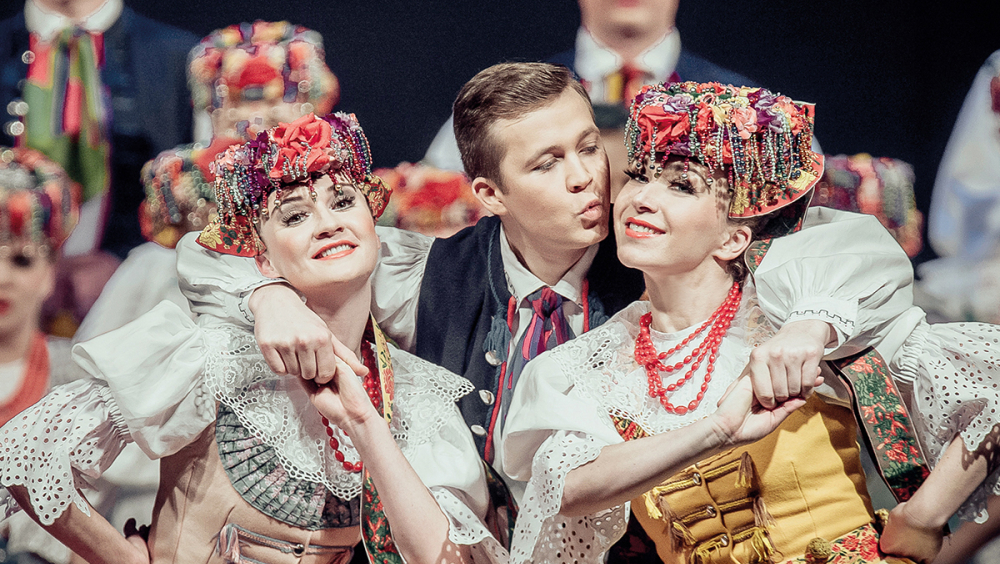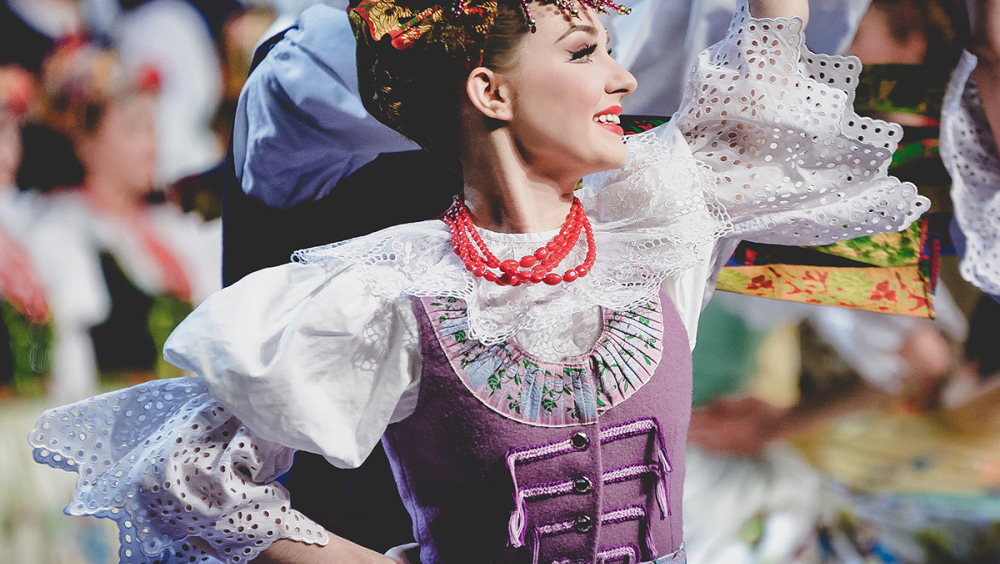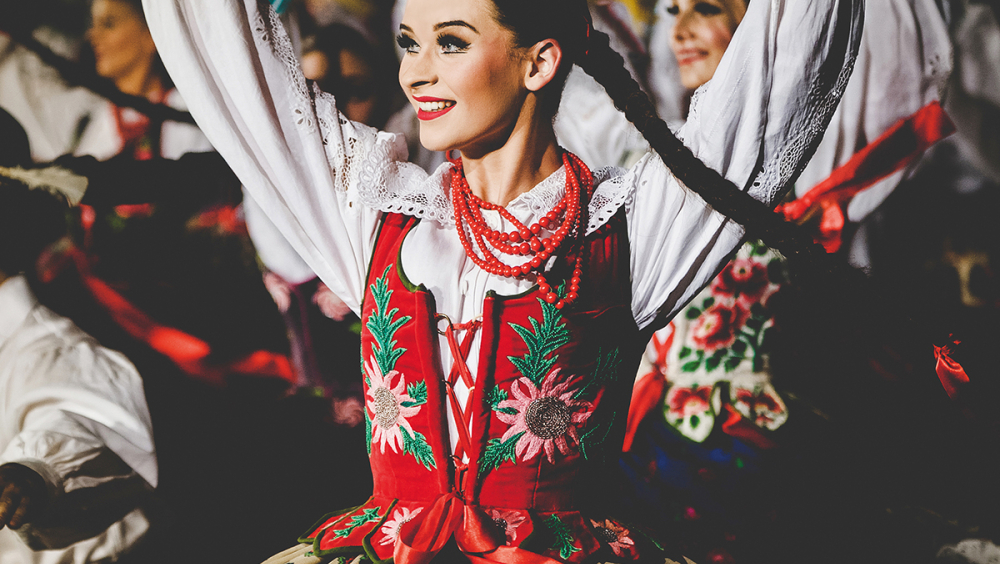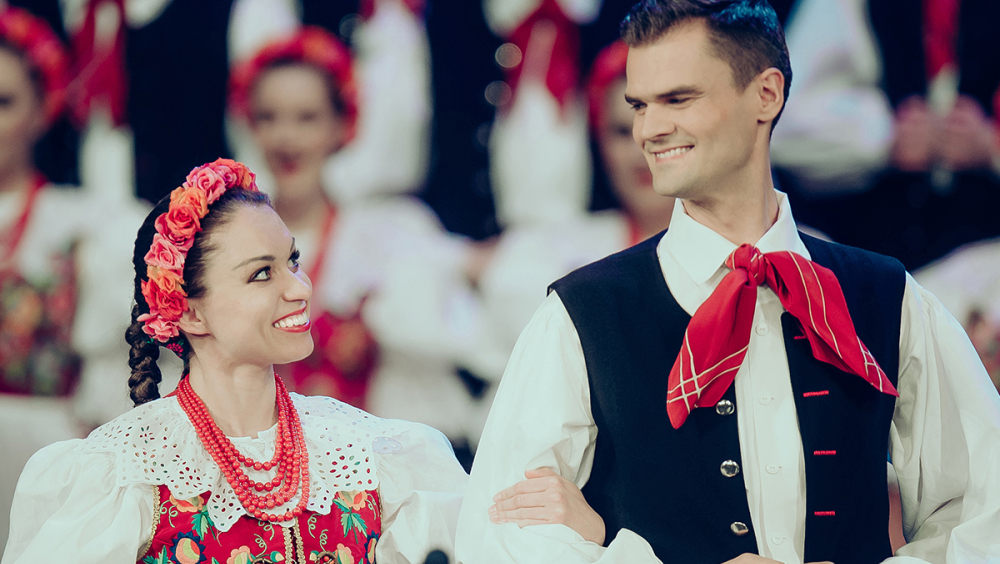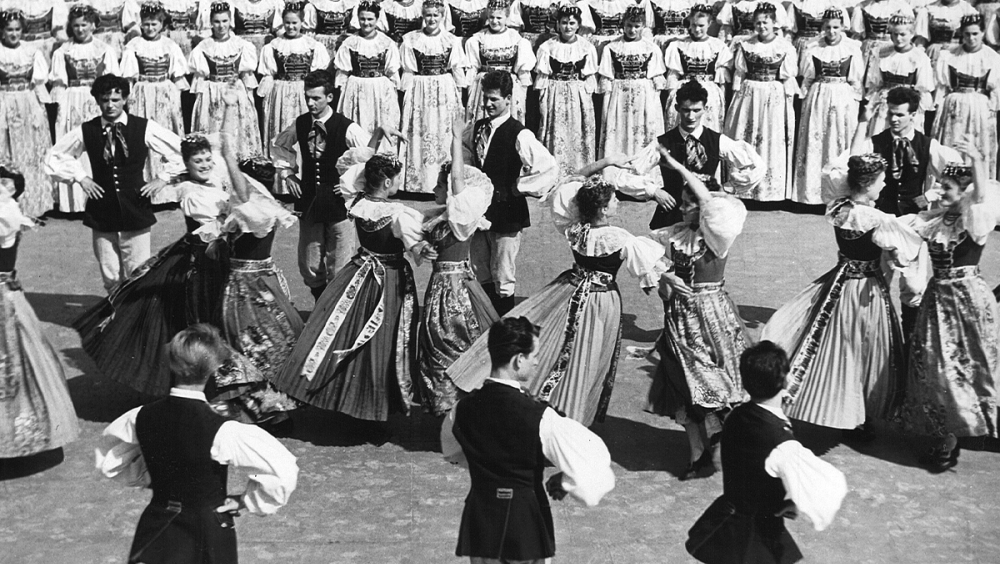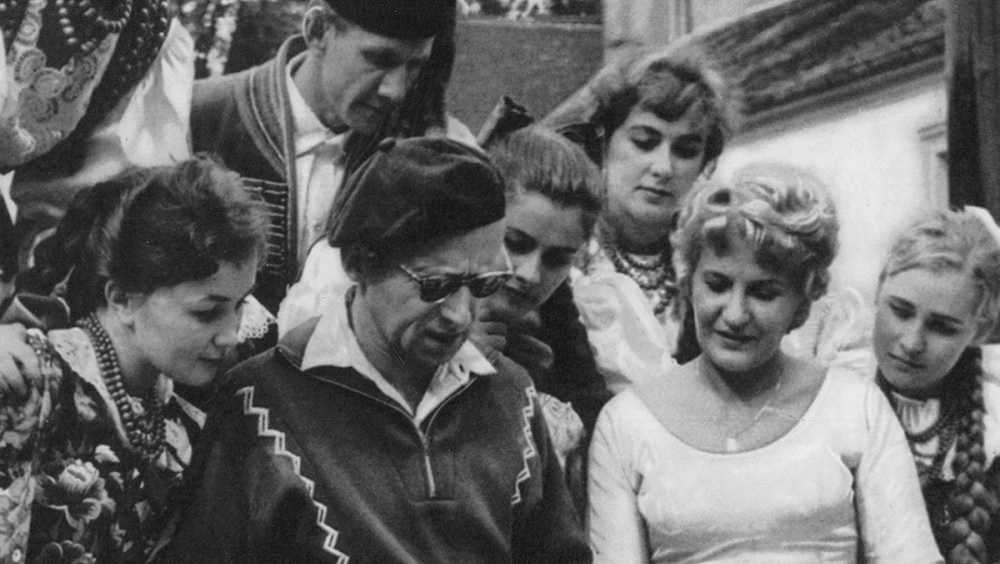The ‘ŚLĄSK’ Ensemble - the dynamics of tradition
The ‘ŚLĄSK’ Ensemble - the dynamics of tradition The subject of the story is to present the contribution of Stanislaw Hadyna Song and Dance Ensemble ‘ŚLĄSK in the long-term preservation, cultivation and promotion of the musical heritage of Polish culture, relating to folk traditions. The 70-year artistic achievements of the Ensemble, exposing centuries-old cultural values of Silesia - the southern region of Poland, serves to develop and shape the awareness of society in the sphere of the essence of ties and functioning in multicultural Europe. It constitutes a significant contribution of traditional Polish culture in the process of strengthening, promoting and creating musical values of the European heritage.
In the southern part of Poland, in the 1950s, at a time of difficult and colorless post-war reality, the Song and Dance Ensemble ‘ŚLĄSK’ was formed - one of the largest folk ensembles in the country. It was perceived at the time almost as a revelation - a dreamed-of, longed-for phenomenon that colored the land of the Upper Silesian region - the land of mines, factories and steel mills. It was an expression and reflection of the diverse, tradition-rich culture of the people who were sustained by the Polish identity of these lands and the struggle to join Poland. The ‘ŚLĄSK’ Ensemble - Stanislaw Hadyna’s first and foremost, who created, shaped its stage-artistic image and led it to the musical scenes of the world. Overcoming many difficulties, he persistently followed his youthful dreams of a top-class folk ensemble. Hundreds of kilometers traveled by farm wagon, bus, on skis or on foot in search of those who needed to be found, did not bring the expected results. There came moments of doubt and hardships of loneliness. ‘In the thicket of organizational and financial issues, the whole thing began to lose its blush and charm. However, I could not go back’ recalled Stanislaw Hadyna. In several months of preliminaries, he auditioned a total of about twelve thousand candidates and selected 120 people. The project of founding the Ensemble was approved by the decision of the authorities. From July 1, 1953, the Ensemble began artistic activities at its home, in Koszęcin. A great idea, an enthusiastic beginning, and then everyday life, constant, difficult work and struggle for physical condition, perfection - a struggle that was won. Stanislaw Hadyna, together with Elwira Kamińska, educated selected young people for many years according to the author's program and teaching concept. ‘A lot of work had to be put in to, without losing any of the simplicity and charm’ Hadyna wrote: ‘to give their voices luster and power where art required it, so that at performances they would affect not only with melody and rhythm, harmony and movement, color and costume, but also with the image and atmosphere of the Ensemble.’ The first concerts of ‘ŚLĄSK’ became an artistic revelation. The most beautiful regional songs and dance, shown in a stage-artistic setting - a synthesis of music, singing and dancing - delighted the audience. The colorful image of the concerts was topped off by striking costumes, modeled on folk costumes. ‘Joyful madness,’ wrote the press after the premiere concerts, ‘a rainbow whirlwind that hums, soars, thrills. The stage begins to whirl, and against the backdrop of the singing Ensemble and the exploding music rolls, a hundred-color flame sways, enchanting youth and sunshine.’ And then came fame, concerts at home and abroad, favorable, even generous reviews from critics of the domestic and foreign press. ‘Could any of them have guessed,’ recalled Stanislaw Hadyna, ‘even in a dream, that they would see Paris, London, New York, Hong-Kong and Shanghai many times over? Did they think about it? About the Azure Grotto in Capri, about the Temple of Heaven in Beijing, about picking oranges in California and rainbow seashells on the shores of the Aegean Sea? No. No one could have predicted that...’ In the post-war reality in the Silesian land, the Ensemble opened a new chapter. It gave it an artistic expression in which all the specificity and beauty of the region was reflected. It became an important element of culture, a close, clear and understandable transmission of heritage. The discovery and demonstration during this period of the richness of the musical traditions of the region, influenced the preservation and maintenance of the culture of the ‘roots’ and the shaping of reality based on the values of folklore. The artistic path set by Stanislaw Hadyna for the development of traditions influenced the continuation and important form of transmission, reaching and uniting different social groups. Soon, Silesian melodies, resounded in various corners of the country, uniting Silesia and Poland. Established 70 years ago in Koszęcin, the art school still functions today. It is where the hearts of people, united by a passion for history, folklore and music, beat in a single rhythm. They faithfully follow the idea of the creator of the Ensemble, preserving his words and memory of him... The primary idea of the 100-member Artistic Ensemble - choir, ballet and orchestra - is to preserve and pass of the sources of Silesian culture against the background of the legacy of other regions of Poland. The main repertoire of the Ensemble is based on Silesian folklore - songs and dances from Upper Silesia, Cieszyn Land and Silesian Beskids. Over the years, the Group's repertoire has been expanded to include the traditions of other Polish regions and national dances. The repertoire includes some 250 songs and dozens of regional dances. Among the Group's most remarkable repertoire pieces are those based on the folklore of the Silesian Beskids, performed by so-called ‘white’ female voices, which represent original shepherd songs. The ‘ŚLĄSK’ Ensemble is still evolving. Today it is a modern cultural institution co-managed by the Ministry of Culture and National Heritage. It promotes a multifaceted range of activities based on the sources of Polish folk culture and seeks innovative solutions, integrating regional values, national heritage and contemporary references. Defines its mission in a new model - a dynamic and creative activity of functioning in the environment, Poland, Europe and the world. The history of the ‘ŚLĄSK’ Ensemble has its beginning and its present history. Let us stop for a moment in the long journey and fix in memory what, what is important now... Seventy years are passing since the premiere concerts and the presentation of stage images, in which the still relevant words of the creator echo: ‘These are our girls and our boys. This is our Silesia...’ Now our time has come - to experience and participate in the honorable Jubilee of the 70th anniversary of the ‘ŚLĄSK’ Ensemble. We respect this moment and we recognize its value.
The ‘ŚLĄSK’ Ensemble extensively functions in the processes of dynamic changes and development of modern culture, disseminating the heritage of musical traditions. Increased activity and creative work of the Ensemble is indirectly connected with Poland's accession to the European Union in 2004, supporting multifaceted projects and undertakings. Being a member of the European Alliance, we participate in the creation and building of European culture. The story of the ‘ŚLĄSK’ Ensemble - the dynamics of tradition’ brings closer the work of creation and functioning of the folk ensemble in the field of preservation and transmission of national culture as a contribution to the European heritage. It shows the path from the concept and dreams, to the fulfillment, the accomplishment of the goal. It points to the sense of unity and integration, the richness of collective memory, the common history of Polish and European culture. The heritage of Europe is a stable foundation linking the past with the present and the future, created on the basis of the achievements of science and art of generations of Europeans. We feel responsible for preserving and shaping the contemporary culture as the basis of history for ‘tomorrow’ and the future generations. We consider ourselves Europeans, so we show our culture and achievements in musical traditions as a richness of European culture, part of a complex mosaic, a common good. Music rooted in tradition is understandable to different communities. It provides a clear language in understanding life and history, finding oneself, spiritual aspects and a valuable way of life. By means of music, song and dance preservation, we bring a new, fresh breath into the roots of tradition and authentic values to make the history of Europe complete, to mark Poland's presence in them.
